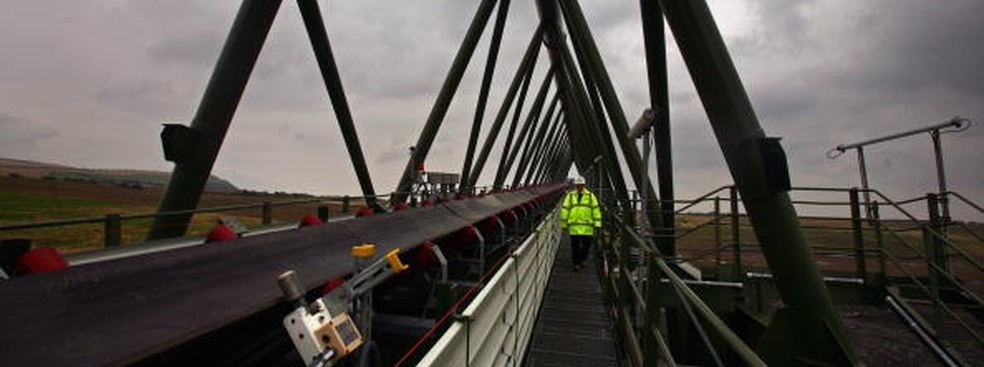Once upon a time Lafarge and Holcim were family firms. They produced cement and were operated locally, largely due to the nature of the construction business where cement plants are expensive to build and transportation of the finished product is equally expensive.
Despite this, globalization and consolidation have changed even the cement industry as acquisition became one of the more economical ways of gaining market share. Over the past decade, in a game of eat or be eaten, many of the smaller, local and international players have been acquired by the bigger players like Lafarge and Holcim, who have grown through acquisition.
But while French firm Lafarge have all-the-while prided themselves on their French roots and adopted a multi-local strategy where construction is still a local business, the Swiss Holcim have employed a global strategy based out of Europe, selling the same product everywhere – in Europe, China, India and elsewhere they’ve acquired local firms – without much of local differentiation.
This month, these two giants of the construction industry announced their intended ‘merger of equals’. Considering the fact that Holcim will likely retain a majority of shares, this is an interesting choice of words. Which strategy will take the upper hand and what challenges lay ahead for a firm of this size?
A Merger of Equals?
This will be a 100% stock deal with no cash outflow: a great move considering the current financial difficult in Europe and the resultant austerity measures in the European Union. Furthermore, the merger is timely for both Lafarge and Holcim who took on debt in the past decade to expand in emerging markets, and as Chinese firms are catching up with them in these markets.
First, by calling it a merger of equals, Lafarge and Holcim are underscoring the synergies that they hope to build between the two businesses: Lafarge has greater presence in mature North American and European markets. Holcim has larger reach in the faster growing markets of Asia and Latin America. Combined they will be uniquely positioned in 90 countries around the world with a balanced exposure to both developed and high-growth markets.
Through synergizing, the merger plans to cut costs in areas such as logistics, distribution, IT, energy consumption, procurement, maintenance and general administration. And according to Lafarge Chief Executive Bruno Lafont, LafargeHolcim, will represent some € 800 million in earnings and will offer higher growth, lower risk, and added value.
Second, the term “merger of equals” might appear to protect the future firm’s status as a French national champion, even though the headquarters will likely be located in Switzerland, probably for tax reasons. Lafont has commented that he had already discussed the deal with France's socialist government, which is highly sensitive to industrial mergers for companies with French roots. Indeed, CAC 40 companies have shied away from positioning themselves as European MNC, at least for the last decade. Does it come due to the increasing tax liability in France imposed by the socialist Government or is it the next level of European integration, only time will tell?
Will LafargeHolcim be a monopoly?
The transaction would be the second-biggest deal announced globally this year, after Comcast Corp.’s bid for Time Warner Cable Inc. It will create a global company with more than 136,000 employees in 90 countries.
That said, Lafarge, Holcim, Heidelberg, Cemex are already subject to a European Commission investigation into allegations that they colluded to fix prices and block foreign imports. And realistically, LafargeHolcim should expect investigations from competition authorities in the UK, the US, Brazil, Canada, Ecuador, France, Morocco, the Philippines, India and China. As the LafargeHolcim entity will be three times the size of its nearest competitors such as Heidelberg and Cemex, it is predicted that the competitors will lose retaliatory power in front of the merged identity thus heralding an era of more consolidation.
Asset sales after the merger will be an imperative to decrease debt and avoid monopolistic situation in different markets and to see the deal clear in front of antitrust regulators.
While finding synergies is enticing, in practice it’s usually easier said than done. Through the years, there are multiple examples of failed mega-mergers[i]. Just as CEOs and Boards approve mega-mergers due to the short-term reasons listed above, with time these benefits may wither off due to the medium term challenges of managing expectations of both sides together with integration issues within the mega companies.
Other challenges ahead will include:
- Naming the new entity: will “LafargeHolcim” work even though Holcim shareholder will control 54% of the stake in the merged entity.
- Headquarters in Switzerland: though unlikely to be popular in France, where Lafarge has been based since its foundation in 1833, while on the otherhand the merged company will get a tax relief. The corporate tax rate in St Gallen, the Swiss canton where Holcim is based, is 17.4% compared with 33.3% in France.
- Defining the board: Bruno Lafont has managed to negotiate being the CEO of the merged entity. Bernard Fontana, the current CEO of Holcim, will be co-head of the integration team. After that what? Furthermore, what will be the shared vision of the company? The shared culture?
- How complex will it be to co-ordinate 90 countries with different local companies with different local responses centrally? What about the “strategy for emerging markets” which has been so different earlier when the two companies were competing?
Deals of this nature would inject a burst of energy into Europe’s mergers and acquisitions market, create European champions and arise optimism in the otherwise depressed market reported to be entering recession phase. There were $US199.2 billion worth of deals targeting European companies in the first quarter of 2014, up 11 per cent from the year earlier period. The latest one in line is that of GEs bid for Alstom’s energy business for €10bn with a separate proposal from Germany’s Siemens to create two European champions.
Hopefully the future is going to be very interesting like the past has been!
[i] Past failure to deliver expectation from mega-mergers include: BP - Amoco, Daimler-Chrysler, Alcatel-Lucent, HP-Compaq, AOL-Time Warner, MCI-Worldcom, CitiCorp-Travellers Group,Vivendi-Universal, France Telecom-Orange, Arcelor - Mittal and others. Recent mega-mergers include Pfizer's $68 billion deal for Wyeth (2009), Kraft's nearly $20 billion deal for Cadbury (2010) and the United–Continental merger (2010), Google-Motorola (2011) at $12.5bn









